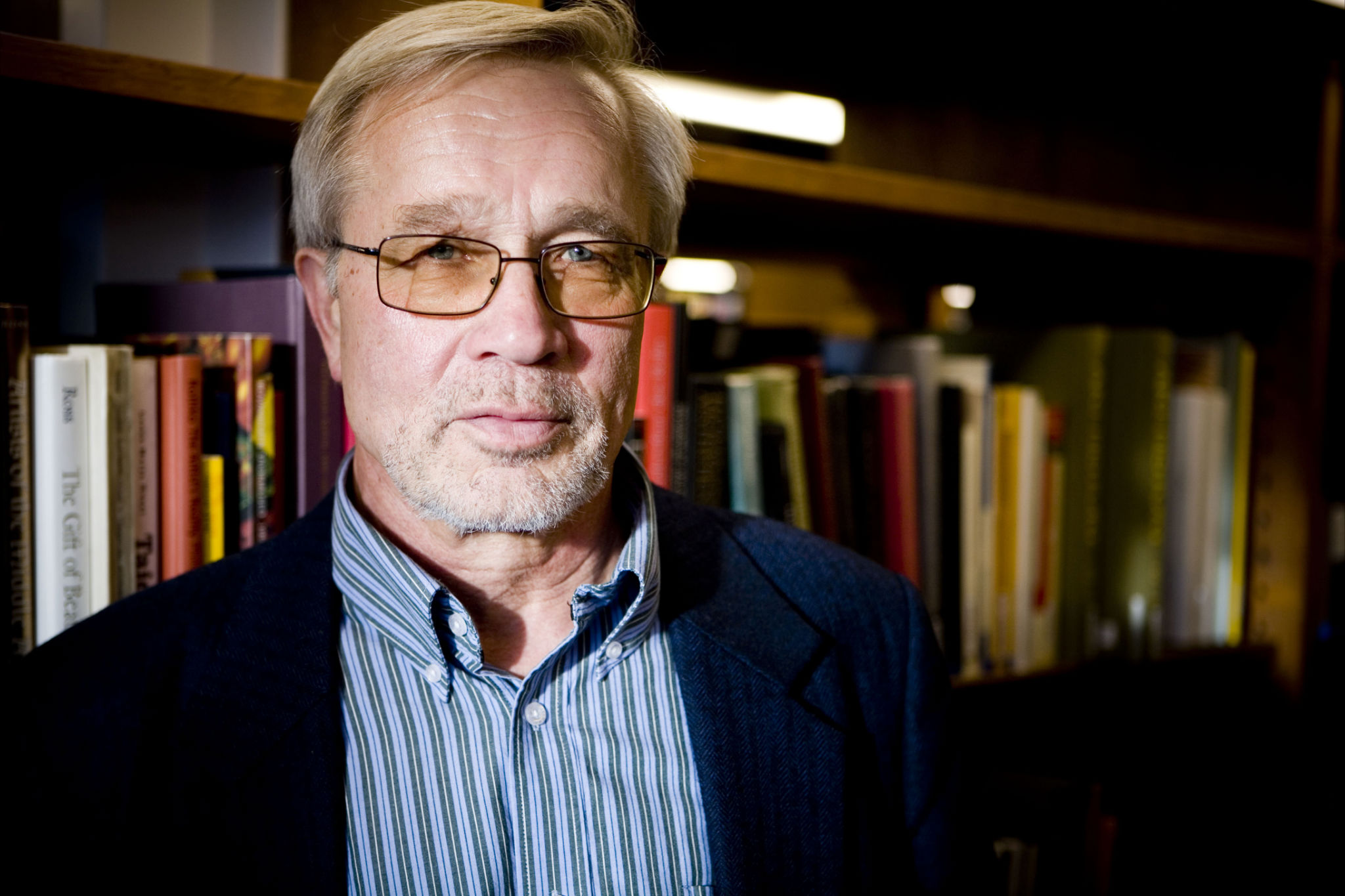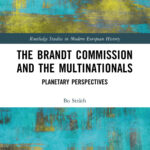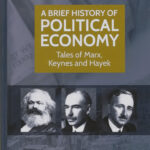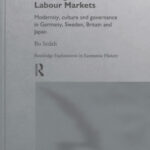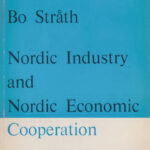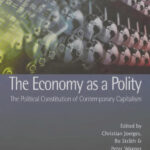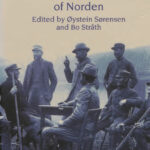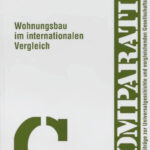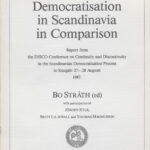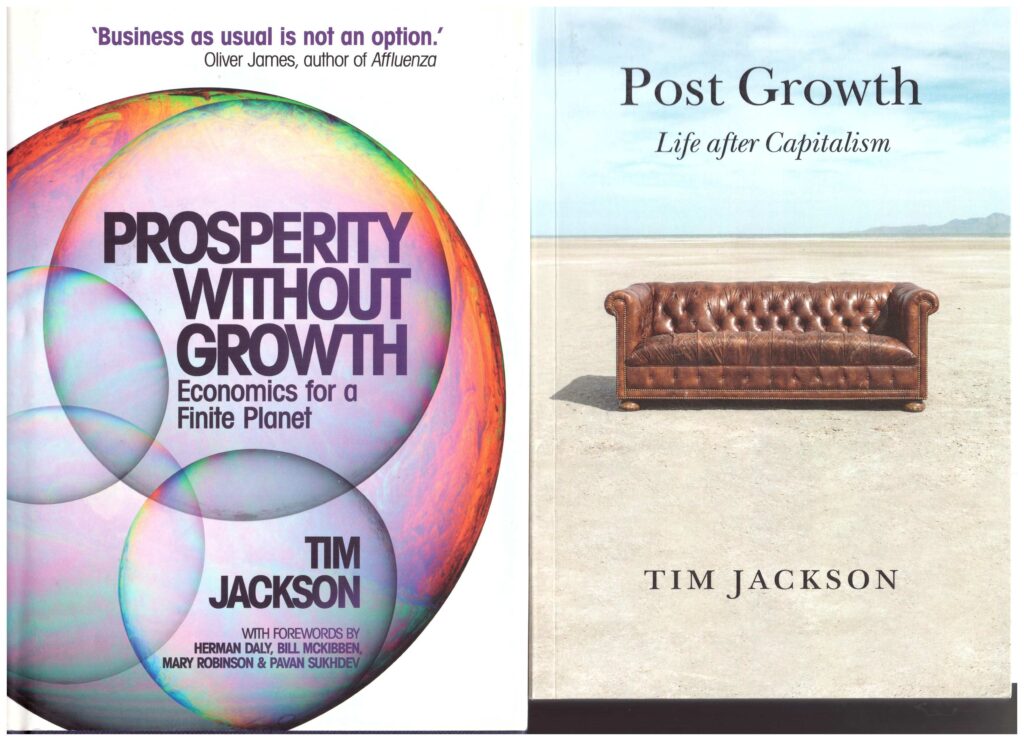
The national states: The historical ballast
Through a coincidental confluence of events and inventions ‒ expressly not as a project inherent and preprogrammed in European enlightenment ‒ and based on colonialism, the industrial revolution took off at the end of the eighteenth century. The coincidence was that it happened in Europe. [1] One might see the industrial revolution in the extension of the colonialist project that began three centuries earlier, exploring and exploiting natural resources and labour for use in new forms. The connection of coal to steam power triggered the industrial revolution.
Like the French revolution at the same time, the industrial revolution came to connote progress. The two revolutions changed the meaning of revolution: revolvere, roll back, standing for a cyclical time perspective, becoming a spearhead towards the future, meaning progress, step forwards. The shift tallied well with the progressive philosophies of history emerging for quite some time in the enlightenment framework. Progress became the guiding principle of the industrialising era in a new interpretative framework compared to the seasonal, annual cycles that gave meaning to agrarian societies. Progress meant breaking up towards the new and unknown.. Progress meant more and better of ever new commodities. The key to progress was economic growth propelled by fossil energy.
Steam power introduced the machine age. A century later, oil sped up the feeling of progress and the expectations of a better future, whatever that meant. Oil as fuel propelled economic growth in terms of bigger output and productivity growth. Commodities could be produced with less labour and/or less time per unit. The natural resources ‒ raw materials and carbon energy sources from Europe and the world for the composition of ever-new products ‒ seemed inexhaustible.
Few thought there was a negative side to the balance sheet, such as predation and overexploitation of natural resources and humans and air and water pollution. Of course, many registered the negative sides of the development, particularly those who suffered from the reverses. The influential voices of the winners maintained that it was a price to pay for progress.
The industrial revolution gave colonialism and its military intensification as imperialism a new dimension. The struggle for raw materials and carbon energy led to conflicts that became ever more violent, with weapons with ever more efficient killing capacities. These developments, in which progress became regressive, culminated in the two world wars that began in Europe.
Under the motto of never again, a new economic world order, where the USA succeeded Great Britain as a leader, provided after 1945 the framework for a new scramble for progress propelled by fossil energy. This time, with the promise to spread wealth to the whole world. Decolonisation and development through aid to poor countries became the political credo in the West in the 1950s. Wealth was piling up again in the West on the ruins of what the world wars had destroyed. The colonies became free. The welfare states in the West, driven by the mutually reinforcing dynamics between mass consumption and mass production, became a model for the world with expectations about universal affluence ahead. The idea was to spread the model to poor countries using development aid. In the 1960s, there were no limits to the expectations that affluence ahead embraced the whole world and meant the extinction of hunger and poverty.
What began in the 1950s as a development aid with the aim of giving the poor South the same standards as the rich North led to a competition in the Third World between the representatives of liberal capitalism and those of state socialism about the best development model. Gradually, against the backdrop of the Cold War, that competition became military with proxy wars all over the South. [2]
Economic growth remained the shibboleth for the new start in the 1950s, like in the long industrialising century before 1914. The military expenditure contributed to the accounting of growth. However, in the industrial North, growth also shaped the scope for redistribution of the yields for social welfare through the imaginary mutual interests between labour and capital. The mutual interests were expressed in mass consumption and mass production dynamics. Growth meant a growing scope for consumption, bringing growing production in expanding interdynamics. However, the system functioned mainly in the North, where the growth machine had once begun and from which it continued to be piloted. In the North, growth provided scope for a reasonable distribution of the yields of the economies among populations. The imagination of development through aid didn’t take off.
In this long history, growth was the lifeline of the economy. The focus on growth was central in economic liberalism and in the exegetics of classical economists, who, in the eighteenth century, succeeded the mercantilists and the physiocrats accompanying and legitimising the early phase of the industrial revolution. Adam Smith, for instance, considered growth as the rise in labour productivity through the distribution of labour and an increase in productive labour through capital accumulation. Smith, David Ricardo and other classical protagonists argued that the reinvestment of profits derived from specialization, division of labour, and comparative advantages led to capital accumulation, which triggered growth in an expanding virtuous circle. With the intensification of the industrial revolution after 1870, neoclassical economics replaced classical economics with a focus on demand and supply in what they considered a self-correcting economy. The neoclassical theorists analysed growth as the result of the interaction between labour, capital, and technology. Marginal utility became a key concept in determining how much of an item consumers would buy. The question was to extend the point where an additional item ceased to increase the utility of a society. At that point, it was time to look for new products to be put on the market. With his idea of creative destruction, Schumpeter focused on the financial system as the promoter of economic growth.
In the 1930s, reacting to the world economic crisis triggered by a 1929 bubble burst, Keynes confronted the neoclassical idea of the economy as self-correcting, developing a theory that emphasised political demand management and the importance of political income distribution for economic growth. Keynes shifted the focus of the economy from the market towards the governments. The economies became political economies.
During this long period of successive schools of thought, when the idea of growth accompanied the industrial revolution in profound debates and theoretical work, the basis of growth was not questioned. The source was inexhaustible. It was just there to organise through division of labour, capital accumulation and demand management. The question was not how much growth was possible or what resources it was based on. In academic courses in neoclassical and Keynesian economics as late as the 1960s, air and water were seen as free utilities, as infinite goods.
The limits to growth and to development
The 1960s was a decade full of contradictions. The feelings of growth for permanent affluence ahead achieved new heights in the Western part of the North at the same time as an emerging conflict about the distribution of wealth sped up there at the end of the decade. Simultaneously, a chorus of growing environmental problems and another about failed development became stronger. Silent Spring by Rachel Carlson in 1962 became a bestseller that drew much attention to the environmental problems in the wake of economic growth without questioning growth as such. [3] The book and its debate triggered a global environment movement. The debate on failed development argued that decolonisation meant neocolonialism. The argument that the North developed the South was wrong. The connection was the other way: the South contributed to the growing wealth in the North through uneven trade relations. The contradictions around the potential of growth ended abruptly in a deep crisis around 1970. Few questioned before that growth as such, only its distribution and environmental implications.
The slowdown of growth through carbon energy occurred in the framework of a complex poly crisis around a collapsing dollar as an international payment gauge and hiking oil and food prices, which increased world hunger and expectations in the South of a different, fairer world order where the oil price shock would be applied for other raw materials, too. These expectations, in turn, resulted in feelings of a threat from the South in the North. In the wake of the collapse of the dollar and the oil price shock, key industries like steel and shipbuilding collapsed in the North, and mass unemployment emerged. The growth-promoting dynamics between mass consumption and mass production slowed down. The series of crises around the dollar as a world currency, world hunger, and oil prices, connected in a poly-crisis, ended the Fordist production regime. That order was based on accelerating productivity increases through Taylorism with its time measurement methods for higher labour intensity and productivity, conveyor belts and piecework. Another component, investments in brick-and-mortar, stagnated. The economic narrative about maintaining growth and full employment through governmental demand management with J M Keynes as a chief designer died. That narrative had explained and legitimised the mutually reinforcing dynamics between mass consumption and mass production in the post-1945 welfare state era in the North. It was an era that had lived on the myth that the model would spread to the South propelled by carbon energy and, in the end, embrace the whole world.
Warnings of global exhaustion of raw materials and environmental pollution of water and air deepened the crisis atmosphere and made the wake-up from the myth abrupt. The Rome Club report Limits to Growth in 1972 explicitly warned that the economy of growth couldn’t go on. This was a fundamental argument hitting the growth ideology with full force. It was no longer a warning about environmental problems caused by the growth but about fundamentally questioning growth as such. Warnings became loud about threatening resource scarcity and environmental pollution, and mass unemployment raised doubts about affluence ahead. A major environmental UN conference in Stockholm the same year warned of the consequences of environmental pollution and coined the concept of ecocide. The gathering with numerous representatives of the poor countries united under the name of the Third World did not address the question of growth, since growth was the hope in the South to catch up with the North. Limits to Growth laid on this point the tension between the North and the South bare, increasing the feelings of crisis.
What is capitalism without growth?
This historical scenario is the backdrop of Tim Jackson’s search for deeper reasons for the crisis in the 1970s and our time’s crisis. His two books, Prosperity without Growth. Economics for a Finite Planet (2009) and Post Growth. Life after Capitalism (2022) depart from the debate on the end of growth, particularly productivity growth, around 1970, which he sees as a frontal questioning of capitalism and its growth basis. What is capitalism without growth? He asks and answers: Nothing.
When labour productivity increased, employees could be paid more, consumers could have cheaper goods, and shareholders could enjoy more profits and/or invest in labour-saving technology that increased productivity. The pie was growing. In the virtuous circle that emerged, wage increases allowed higher profits. Environmental pollution and waste production were kept out of this circle. Still, they were included in the calculation of the gross national products, not as damage but as production, increasing the GNPs. This was the prevailing principle of growth during two centuries of industrialisation across occasional crises, wars, and other backlashes. Increasing input of coal and then oil has driven the increase in labour productivity, and growing GNPs was the goal of the economic activities, whatever GNP stood for. Fossil energy extraction made productivity growth possible.
GNP, as the measuring unit, let the negative aspects of development disappear. The GNPs were instruments of illusion. The GNPs were both reality and myth because the figures were real in a biased way that was concealed. The GNPs didn’t consider the cost side of environmental destruction and resource exhaustion. On the contrary, this work contributed to the GNP figures on the positive balance side.
When the environmental and resource exhaustion problems from the beginning of the 1970s could no longer be swept under the carpet, and the Fordist labour productivity ceased to increase, the pie stopped growing. Wages and profits, consumer prices and production costs, and the scope for consumption and investment came to compete. The virtuous circle became a vicious circle of conflicts about how to share the pie that didn’t grow.
Capital’s escape, casino speculation, and collapse
Capital’s solution was an escape forward confronting historically developed solidarity ties on the labour markets and trade union power established in power struggles over decades and centuries. A new market radical narrative legitimised the development and guided politics and business. Freedom was the motto of escape. Freedom was defined as the freedom of capital in an approach called neoliberal. The propagators of the new story required the deregulation of the economy and the privatisation of the markets. In particular, they insisted on free trade with money and capital. Money was the new shibboleth. Trade with money to make more money was the motto. Money investments were the tools to make more money. Moneymaking became the motor of growth. Profits were not reinvested in brick-and-mortar but in financial products.
Against the backdrop of the general feeling of a break-up after the collapse of the Soviet system, the governments were helpless when the wave of a new zeitgeist washed over them. Under tensions, they all went in the neoliberal direction. They felt they had to. A dispute between a Swedish prime minister and his minister of finance is illustrative:
What is going on in the country? The government has struggled through a budget process that has pushed spending growth down to zero, under great efforts to keep the Swedish economy in balance. At the same time, banks are pouring money into their customers to boost consumption. You can’t open a newspaper without seeing giant advertisements for cheap loans. Thank goodness the economy is overheating. [4]
Economic power became political power, too, taking over financial control and the granting of credit, squeezing the governments out of the power centre. The credit card was one of the inventions and instruments for taking over and expand demand management. Governments began to compete with each other about best practices for attracting what was believed to be employment-creating capital looking for maximal yield. Best practices meant social downgrading. Financial capitalism replaced industrial brick-and-mortar capitalism under the reorganisation and globalisation of labour markets and production chains for a new kind of global just-in-time production where labour was cheapest. Governments which ran their budgets with ‘too much’ deficit became targets of shark worm-like attacks driven by speculations about the values of national currencies. The ‘Market’ decided what was ‘too much’, and austerity politics to keep down budget deficits became the governments’ hopes to avoid the shark worms.
The previous question of how to redistribute the yields from growth from the rich in the North to the poor in the South through development aid became a new phenomenon called globalisation, meaning a systematic planetary redistribution from the poor to the rich, as Thomas Piketty has demonstrated in rich detail. [5]The North-South conflict was silenced under a new powerful ideology that became hegemonic. The core of the division remained North-South, but the redistribution brought extreme richness also to elites in the South and new kinds of poverty in the North with beggars and homeless people in the city centres.
The dollar that triggered the 1970s crisis through its collapse continued as the gauge of market transactions. Despite its collapse, it came back as the unthreatened gauge, and whether it was weak or strong didn’t matter. It replaced gold, and in that capacity, it didn’t have to justify any value. Other currencies had to look for and justify their values regarding dollar exchange rates. A hysteric race for dollars began with the illusion that it was the only security. The dance around the new gold calf sped up in the 2000s, becoming ecstatic and delirious until everything burst in the Lehman Brothers bankruptcy in 2008.
A burst of liquidity, combined with the governmental defence of budget balances through austerity politics, led to a capitalist bonanza mood for a while after 1990. Still, loose money and lax regulation in a casino economy of borrowing and lending destabilised financial markets and deepened social inequality. In the Fordist production regime, the employees were unionized and fought successfully for their fair share. In the financial acrobatics they were chanceless. In practice, the motto of lifting all boats became a bottom-up redistribution from the poor to the rich. A prominent banker and market advisor of the German Chancellor, and through her of the whole EU, the face of the German finance industry, still boasted three years after the bubble burst about annual capital returns of 25 per cent as a standard. As if he dreamt of new stakes by the governments after their billion packages to the global finance industry in 2008 under the motto of ‘too big to fail.’ A new round of finance scramble for a new bubble. [6] The hypocrisy celebrated unseen triumphs during the short neoliberal era. Tim Jackson concludes: “… the exact same policies designed to bring growth back [in response to the 1970s crisis] were precisely the ones that led to its downfall.” (Post Growth: 26). Speculating capitalism emancipated from finance market restrictions initiated and terminated the brief neoliberal era.
Wolfgang Streeck attracted attention with his book Buying Time ten years ago and the argument that capitalism as democratic capitalism was ending. It was not labour that revolted against the 1970s crisis, like in the 1930s crisis, but capital confronting the constraints of democratic capitalism as it had been established after World War II, insulating the market economy from democratic pressures. Streeck prognosticated market-driven capitalism without democracy, escaping political monitoring, and market justice without social justice. [7]
In a second book summarising the debate on Buying Time, Streeck considers capitalism a historical phenomenon in chronic disrepair as a social system. Nobody believes anymore in a moral revival of capitalism, he writes. [8] However, Streeck remains in that book in his neoliberal perspective, where neoliberal stands for Hayekian, rule-based, disciplining and enforcing the democratic states to become international consolidation states, from progressive taxation of incomes for redistribution to ‘budgetary consolidation’ as the euphemism for austerity politics. Furthermore, governments privatised governmental credit politics to the global finance industry beyond the reach of national governments.
Streeck outlines this process clearly. However, his focus is European, and his target is the European Monetary Union. Dissolving the EMU and the euro and reintroducing flexible national currencies and exchange rates would be the chance to maintain the democratic order. If this doesn’t happen, a Hayekian money regime will impose austerity and destroy democracy. This is his analysis in a nutshell.
The problem is deeper and more global than Streeck imagined in 2013-2014. Hayek was already then out, and neoliberalism had become wild West and laissez-faire. Hayek might have been a point of reference in the neoliberal campaign in the 1970s and 80s, but in the 2000s he was irrelevant. Since Streecks books, the situation has deteriorated from a democratic perspective but not in the direction Streeck prognosticated. The problem is not the euro but much deeper. There is no global free trade market in the conventional sense anymore, as little as the Soviet Union was a market. Pace Trump and Musk. The power lies with global corporations, digital platforms, and the finance industry. An accelerating growth in authoritarian power and military violence and ideas of anarcho-capitalism make neoliberalism and the idea of an ordered world market managed by global capital a historical category that left its Hayekian foundation stage in the 2000s under transformation to laissez-faire
Tim Jackson registers Streeck as a milestone in the debate on the way towards a post-capitalist world society but puts the focus very differently. The myth of growth has driven the planet to the verge of ecological collapse and unprecedented financial fragility and precipitated the terrifying spectre of social instability. Even as capitalist apologists struggle to revive the corpse, Jackson writes that their underlying myth appears to be disintegrating. Capitalism has no answers to its own failings. It cannot pursue social justice because it prioritises profit. The failure is obviously the kind of democratic capitalism that existed before the 1970s crisis in a small part of the world. The capitalism that emancipated itself from democratic ties can’t protect our climate because it continues to idolise the stock market. Capitalism’s core belief to eternal growth lies trembling in the ruins, Jackson concludes. But when the myths fail, hope begins to fade, he adds. The loss of a sustaining myth undermines our sense of meaning and threatens collective well-being on the planet. Only raw, unchecked power remains.
Beyond capitalism
Tim Jackson looks for new narrative power to confront this situation. Developing new myths, better stories, and clearer visions than that one about permanent growth is as essential as understanding the dynamics of the collapse. He doesn’t make any prognoses but looks for possibilities to transcend capitalism and transform democracy, making it capable of confronting the environmental and raw materials exhaustion problem. This problem ultimately subjugates capitalism and democracy because it is an existential planetary problem. He takes Streeck’s conclusion in a different direction, looking for solutions beyond the death of capitalism and beyond historical attempts to transcend it. He is looking for a post-growth narrative as the basis of a new foundational myth.
The major problem is that capitalism assumes permanent growth and that more is better. Resources can no longer be considered infinite on a planet with nine billion inhabitants. Growth must stop, Jackson argues, because it leads to resource exhaustion and brings climate change due to the accumulated carbonisation of the atmosphere accompanying two hundred years of industrial production to a tipping point where the road towards an uninhabitable planet becomes irrevocable. The risk situation and its threats are well known through massive scientific documentation. Emotional denials of this documentation and conspiration theories in its wake do not change the outcome through non-action. On the contrary, they speed it up.
A new narrative, a new planetary foundation myth, must depart from the insight of limited resources and the fact that we are physically tied to the impact of thermodynamic laws. The first concerns energy that cannot be created or destroyed, not even by capitalism and its possible inventions. The second states that heat always flows spontaneously from the hotter to the colder. There are natural processes that are irreversible and impossible to turn, even for capitalism.
Jackson illustrates his argument about the need for new narrative power by epigrams of each of the ten chapters in his recent second book. The epigrams connect the chapters to a key figure, a great political leader, a writer, a philosopher, a scientist, etc., to which he has a special relationship. Two of them are the biologist Lynn Margulis and the evolutionist Charles Darwin. Departing from Darwin’s evolutionary theory, Lynn Margulis explored the planetary microcosm of bacteria and developed a theory that fundamentally changed our understanding of life on Earth. She demonstrated that animal and plant life evolved from bacteria through symbiosis and that evolution happens as much through cooperation as competition. Darwin’s theory of evolution asserts that life is a relentless struggle for existence. But the struggle itself is not an objective reality but a metaphor, powerfully evoking seemingly trustworthy visions of life as the domain of scarcity, conflict, competition and the dichotomy of victory and defeat. But it remains a metaphor.
Darwin was aware of this, but the narrative became dangerous in the hands of the essentialist Darwinists. Herbert Spencer shifted Darwin’s evolutionary struggle for existence to a more radical metaphor, the survival of the fittest, but didn’t see it as a metaphor. The essentialising language that emerged connoted expressions like the law of the jungle, but it also drew on historical experiences that Hobbes in Leviathan formulated as the war of all against all. However, Jackson argues (88), it was the ethos of industrial capitalism that inspired Darwin’s metaphor. He also refers to the ethos of the jungle. The use of the term ethos here is somewhat astonishing. One reads it more as practices or habits of industrial capitalism in the jungle, practices and habits which didn’t know any ethos. However, ethos is not Jackson’s point. He wants to make the point that capitalism has coloured our view of nature, not the other way that capitalism reflects nature. However, once Darwin had made the practices of capitalism a metaphor for nature, the metaphor fed back as essentialism, giving new authority to capitalism. Its practices were natural. Jackson notes that capitalism “established rules it borrowed from a prejudiced view of nature and imposed them tyrannically on the operation of the market” (89). The view was prejudiced and biased because it forgot about the role of symbiosis. Cooperation and coordination are key in the struggle for existence, as are competition and natural selection.
On this point, one might add that capitalism has understood this, too. The global corporations build on a long history of price and production cartels and monopolies. Antitrust authorities emerged a century ago as instruments to bring back competition to the capitalist ordering of the jungle.
Evolutionary theory and biology build on metaphors. Economics, too, is storytelling, and this insight guides Jackson in his search for a new story that transcends capitalism. He demonstrates that there is a need for a new language replacing the convention where growth is the precondition.In the conventional story, GNP is the tool to measure growth, and air and water pollution pops up the size of the GNP. The same is valid for the buildup of financial speculation bubbles under the name of financial services. However, the GNP does not measure the degree of resource exhaustion and the carrying capacity of the planet’s nature. Do we consume more than what nature renews? There is a need for a new language for an ecological economy that connects to biophysical knowledge, emphasising cooperation and coordination as much as competition. The new language must involve accounting. There must be a debt side on the balance sheet for pollution and overconsumption of resources. The neoliberal collapse of credibility has left a vacuum which the language of nationalism, racism, exclusion, and geopolitical power tries to fill. This dangerous language goes in the wrong direction and will make the problems much bigger. It cannot be the alternative we are looking for.
Democracy after capitalism
Jackson doesn’t say much about the political order that will implement the world beyond capitalism but seems to assume that democracy can handle the transformation. Will it? Can it?
It seems clear that the organisation of the shift requires a new language, a new mentality, and a new way of thinking away from the mass consumption society. Jackson refers to restraint and complacency as new virtues replacing abundance and wastefulness, but not meaning poverty. Growth will stop in the rich world, but the economies of poor countries must be allowed to grow for at least a transitional time until sufficient equalisation has occurred between rich and poor countries. Growth has been levelling out in the North since the 1970s, while it is higher in the South. In that sense, the transition has already begun.
The 1970s laid bare the problems of a world economy of permanent growth. The Limits to Growth got some data wrong but corrected the errors in a follow-up report, which didn’t change the overall picture. There are physical limits to permanent growth. In addition to the problem of resource exhaustion, the environmental problem in the 1970s has become an existential threat in the wake of climate change, and the world is steering towards an irreversible tipping point. The transition towards no growth aims to adjust the economy to the planetary resources of raw materials and energy. In addition, climate change imposes a decrease in pollution difficult to achieve with continued growth. Carrying capacity and resilience are new catchwords. This transition will require much thoughtful political leadership. Democracy, as such, as a system, does not provide it.
A key question is what kind of democracy can do it and what we mean by democracy. Democracy developed historically in a close and tension-filled relationship with capitalism and industrialisation. It was a response to these. Quite consequently, democracy peaked during the brief era of mutually reinforcing mass consumption and mass production with public provision of welfare. Parliamentary systems brought negotiations and compromises of ideas and interests expressed by ideology- and interest-driven parties. Through economic growth, they had a growing pie for distribution which facilitated compromises also long before the welfare states culminated. Still, it was a development and peak restricted to a small part of the world.
In the 1960s, just as the growth began to stagnate, but the general mood was about continuous affluence and mass consumption ahead, mainstream parties began to abandon their representation of specific interests, developing a catch-all approach, scrambling together votes from far beyond their core constituencies, becoming merely office-seeking apparatuses. Peter Mair, in a posthumously published book (2013), noted that at that time, they cut their ties to what, in long historical battles, had become the hallmark of civil society. In these battles, representational politics had been an ideology-driven vocation rather than a profession. In the 1960s, vocation became a profession, and politics became technocratic, a matter of administrating a growing pie. [9]
Neoliberal politics, which emerged in response to the poly-crisis at the beginning of the 1970s, accelerated this development with its argument that politics was subordinated to the market, without alternatives, as Margret Thatcher and Angela Merkel formulated it, market-compliant. With the market imperative, the scope for creative politics narrowed down. The neoliberal doctrine defined democracy according to formal criteria like voting rights, free elections, secret ballots, etc, and on that basis, the number of democracies in the world grew after the end of the Cold War. However, nothing was said about how the voters could influence political substance, such as social justice and social welfare. Neoliberal democracy was a low-intensity democracy.
This development became disastrous when the neoliberal globalisation narrative collapsed in 2008, and what seemed self-evident became full of doubts. Voters abandoned parties which failed to redeem promises and expectations. A generation of political leaders unlearned how to make politics as one used to do before the 1970s, how to formulate goals and visions and implement them. They lost virtues and skills. They said yes, we can, wir schaffen das, and si può fare, meaning you, their electorates, can, without realising that opening borders for mass migrants escaping wars, climate catastrophes, and poverty requires housing, nursing, education, and health politics, investments and political mobilisation and allocation of resources, which, in turn required imaginary power and creative fantasy. The mantra of no alternative and politics subjugated to market compliance tied political leaders’ hands and fundamentally changed policy-making conditions and mentalities. Markets imposing austerity politics restricted their scope of action and imaginative power. Sovereignty came to mean governments competing with governments about making their countries attractive for capital, hoping it would bring employment, ignoring the risks of social downgrading. The new manual for policymaking was hegemonic. Instead of voters looking for parties that couldn’t offer alternative politics, parties began to look for voters, speeding up the catch-all approach under the loss of profile.
In the vicious circle that Western democracies have been experiencing since the neoliberal breakthrough, the latest trend seems to be more and smaller parties destabilising parliamentary order. Muddling through and plumbing replaces designing and implementing visions of the future.
The development culminated in a trend that Peter Mair traces back to the 1960s, when the preconditions for growth stagnated, before the neoliberal breakthrough. One might see neoliberal ascendance as another reaction to stagnating growth. Under the neoliberal umbrella, the trend accelerated. The neoliberal escape from governmental control happened at the cost of democratic achievements. Democracy has become very fragile; some talk about its insidious death. [10]
The challenges are enormous but will grow. At this point, one might note that Apple, Meta, Google, Amazon, etc, are very different representatives of capitalism than Rockefeller, Ford, Mitsubishi, Volkswagen, SK, Siemens, etc. Ever-warmer oceans send ever-heavier thunderstorms and water packages over the continents. At some point, the focus of the political conflict will shift from how to repair and reorganise after the catastrophes to why we haven’t done enough against the causes.
Solving the problem’s escalation under democratic conditions will require extraordinary leadership. There are not only the ever-heavier thunderstorms that will change the parameters of policymaking but also the shitstorms. The boiling emotions on the internet will underpin the climbing temperatures. In times whenever more voices talk about system competition and do it from a geopolitical perspective, the answer cannot be increasing competition through protectionism but system coordination and cooperation for planetary resilience. Still, in a time of Trumpian post-truth nihilism, developing a planetary debate about values and principles is crucial, reshaping values lost, and confronting hypocrisy. Tim Jackson’s two books are important points of reference for that debate.
The gap the books don’t fill deals with what we mean by capitalism when discussing its end without growth. How do we define capitalism? How do we conceptualise it? Is capitalism equal to private property? If so, what about China’s state capitalism? Is capitalism equal to competition? If so, what about capitalism as organised coordination against competition? The cartels, the monopolies? What does private mean, considering the growing number of billionaire owners? Democracies emerging as polities for the climbing middle classes, expanding democracies and capitalism hand in hand: How relevant is that image today? When private means billionaires, owners of giant digital platforms trading billions with algorithms in nanoseconds, how do we define the connection between capitalism and democracy?
What ideals about capitalism do we still have, and what capitalism does exist? We need to know that and have concepts about it before we begin to look beyond it for an alternative order. The suggestion of after-capitalism cannot stop with the preposition. What economic order do we imagine? A convincing and galvanising narrative is necessary but not enough. The narrative must cover some institutional and normative substance. Who organises competition and cooperation, distribution and redistribution of yields and profits? What normative order do we want if we don’t want to continue with the one where values have become prices and prices mean value nihilism? What kind of political order? A political economy as opposed to the economy that has established itself as a polity?
These questions might be too big to put because they are too big to answer. But they are nevertheless necessary. If they are not addressed, the debate will be about a phantom. The most recent such debate dealt with the Market, the essentialisation of a fiction.
Thanks to Henning Trüper for his comments on an earlier blog draft.
The national states: The historical ballast
Through a coincidental confluence of events and inventions ‒ expressly not as a project inherent and preprogrammed in European enlightenment ‒ and based on colonialism, the industrial revolution took off at the end of the eighteenth century. The coincidence was that it happened in Europe. [1] One might see the industrial revolution in the extension of the colonialist project that began three centuries earlier, exploring and exploiting natural resources and labour for use in new forms. The connection of coal to steam power triggered the industrial revolution.
Like the French revolution at the same time, the industrial revolution came to connote progress. The two revolutions changed the meaning of revolution: revolvere, roll back, standing for a cyclical time perspective, becoming a spearhead towards the future, meaning progress, step forwards. The shift tallied well with the progressive philosophies of history emerging for quite some time in the enlightenment framework. Progress became the guiding principle of the industrialising era in a new interpretative framework compared to the seasonal, annual cycles that gave meaning to agrarian societies. Progress meant breaking up towards the new and unknown.. Progress meant more and better of ever new commodities. The key to progress was economic growth propelled by fossil energy.
Steam power introduced the machine age. A century later, oil sped up the feeling of progress and the expectations of a better future, whatever that meant. Oil as fuel propelled economic growth in terms of bigger output and productivity growth. Commodities could be produced with less labour and/or less time per unit. The natural resources ‒ raw materials and carbon energy sources from Europe and the world for the composition of ever-new products ‒ seemed inexhaustible.
Few thought there was a negative side to the balance sheet, such as predation and overexploitation of natural resources and humans and air and water pollution. Of course, many registered the negative sides of the development, particularly those who suffered from the reverses. The influential voices of the winners maintained that it was a price to pay for progress.
The industrial revolution gave colonialism and its military intensification as imperialism a new dimension. The struggle for raw materials and carbon energy led to conflicts that became ever more violent, with weapons with ever more efficient killing capacities. These developments, in which progress became regressive, culminated in the two world wars that began in Europe.
Under the motto of never again, a new economic world order, where the USA succeeded Great Britain as a leader, provided after 1945 the framework for a new scramble for progress propelled by fossil energy. This time, with the promise to spread wealth to the whole world. Decolonisation and development through aid to poor countries became the political credo in the West in the 1950s. Wealth was piling up again in the West on the ruins of what the world wars had destroyed. The colonies became free. The welfare states in the West, driven by the mutually reinforcing dynamics between mass consumption and mass production, became a model for the world with expectations about universal affluence ahead. The idea was to spread the model to poor countries using development aid. In the 1960s, there were no limits to the expectations that affluence ahead embraced the whole world and meant the extinction of hunger and poverty.
What began in the 1950s as a development aid with the aim of giving the poor South the same standards as the rich North led to a competition in the Third World between the representatives of liberal capitalism and those of state socialism about the best development model. Gradually, against the backdrop of the Cold War, that competition became military with proxy wars all over the South. [2]
Economic growth remained the shibboleth for the new start in the 1950s, like in the long industrialising century before 1914. The military expenditure contributed to the accounting of growth. However, in the industrial North, growth also shaped the scope for redistribution of the yields for social welfare through the imaginary mutual interests between labour and capital. The mutual interests were expressed in mass consumption and mass production dynamics. Growth meant a growing scope for consumption, bringing growing production in expanding interdynamics. However, the system functioned mainly in the North, where the growth machine had once begun and from which it continued to be piloted. In the North, growth provided scope for a reasonable distribution of the yields of the economies among populations. The imagination of development through aid didn’t take off.
In this long history, growth was the lifeline of the economy. The focus on growth was central in economic liberalism and in the exegetics of classical economists, who, in the eighteenth century, succeeded the mercantilists and the physiocrats accompanying and legitimising the early phase of the industrial revolution. Adam Smith, for instance, considered growth as the rise in labour productivity through the distribution of labour and an increase in productive labour through capital accumulation. Smith, David Ricardo and other classical protagonists argued that the reinvestment of profits derived from specialization, division of labour, and comparative advantages led to capital accumulation, which triggered growth in an expanding virtuous circle. With the intensification of the industrial revolution after 1870, neoclassical economics replaced classical economics with a focus on demand and supply in what they considered a self-correcting economy. The neoclassical theorists analysed growth as the result of the interaction between labour, capital, and technology. Marginal utility became a key concept in determining how much of an item consumers would buy. The question was to extend the point where an additional item ceased to increase the utility of a society. At that point, it was time to look for new products to be put on the market. With his idea of creative destruction, Schumpeter focused on the financial system as the promoter of economic growth.
In the 1930s, reacting to the world economic crisis triggered by a 1929 bubble burst, Keynes confronted the neoclassical idea of the economy as self-correcting, developing a theory that emphasised political demand management and the importance of political income distribution for economic growth. Keynes shifted the focus of the economy from the market towards the governments. The economies became political economies.
During this long period of successive schools of thought, when the idea of growth accompanied the industrial revolution in profound debates and theoretical work, the basis of growth was not questioned. The source was inexhaustible. It was just there to organise through division of labour, capital accumulation and demand management. The question was not how much growth was possible or what resources it was based on. In academic courses in neoclassical and Keynesian economics as late as the 1960s, air and water were seen as free utilities, as infinite goods.
The limits to growth and to development
The 1960s was a decade full of contradictions. The feelings of growth for permanent affluence ahead achieved new heights in the Western part of the North at the same time as an emerging conflict about the distribution of wealth sped up there at the end of the decade. Simultaneously, a chorus of growing environmental problems and another about failed development became stronger. Silent Spring by Rachel Carlson in 1962 became a bestseller that drew much attention to the environmental problems in the wake of economic growth without questioning growth as such. [3] The book and its debate triggered a global environment movement. The debate on failed development argued that decolonisation meant neocolonialism. The argument that the North developed the South was wrong. The connection was the other way: the South contributed to the growing wealth in the North through uneven trade relations. The contradictions around the potential of growth ended abruptly in a deep crisis around 1970. Few questioned before that growth as such, only its distribution and environmental implications.
The slowdown of growth through carbon energy occurred in the framework of a complex poly crisis around a collapsing dollar as an international payment gauge and hiking oil and food prices, which increased world hunger and expectations in the South of a different, fairer world order where the oil price shock would be applied for other raw materials, too. These expectations, in turn, resulted in feelings of a threat from the South in the North. In the wake of the collapse of the dollar and the oil price shock, key industries like steel and shipbuilding collapsed in the North, and mass unemployment emerged. The growth-promoting dynamics between mass consumption and mass production slowed down. The series of crises around the dollar as a world currency, world hunger, and oil prices, connected in a poly-crisis, ended the Fordist production regime. That order was based on accelerating productivity increases through Taylorism with its time measurement methods for higher labour intensity and productivity, conveyor belts and piecework. Another component, investments in brick-and-mortar, stagnated. The economic narrative about maintaining growth and full employment through governmental demand management with J M Keynes as a chief designer died. That narrative had explained and legitimised the mutually reinforcing dynamics between mass consumption and mass production in the post-1945 welfare state era in the North. It was an era that had lived on the myth that the model would spread to the South propelled by carbon energy and, in the end, embrace the whole world.
Warnings of global exhaustion of raw materials and environmental pollution of water and air deepened the crisis atmosphere and made the wake-up from the myth abrupt. The Rome Club report Limits to Growth in 1972 explicitly warned that the economy of growth couldn’t go on. This was a fundamental argument hitting the growth ideology with full force. It was no longer a warning about environmental problems caused by the growth but about fundamentally questioning growth as such. Warnings became loud about threatening resource scarcity and environmental pollution, and mass unemployment raised doubts about affluence ahead. A major environmental UN conference in Stockholm the same year warned of the consequences of environmental pollution and coined the concept of ecocide. The gathering with numerous representatives of the poor countries united under the name of the Third World did not address the question of growth, since growth was the hope in the South to catch up with the North. Limits to Growth laid on this point the tension between the North and the South bare, increasing the feelings of crisis.
What is capitalism without growth?
This historical scenario is the backdrop of Tim Jackson’s search for deeper reasons for the crisis in the 1970s and our time’s crisis. His two books, Prosperity without Growth. Economics for a Finite Planet (2009) and Post Growth. Life after Capitalism (2022) depart from the debate on the end of growth, particularly productivity growth, around 1970, which he sees as a frontal questioning of capitalism and its growth basis. What is capitalism without growth? He asks and answers: Nothing.
When labour productivity increased, employees could be paid more, consumers could have cheaper goods, and shareholders could enjoy more profits and/or invest in labour-saving technology that increased productivity. The pie was growing. In the virtuous circle that emerged, wage increases allowed higher profits. Environmental pollution and waste production were kept out of this circle. Still, they were included in the calculation of the gross national products, not as damage but as production, increasing the GNPs. This was the prevailing principle of growth during two centuries of industrialisation across occasional crises, wars, and other backlashes. Increasing input of coal and then oil has driven the increase in labour productivity, and growing GNPs was the goal of the economic activities, whatever GNP stood for. Fossil energy extraction made productivity growth possible.
GNP, as the measuring unit, let the negative aspects of development disappear. The GNPs were instruments of illusion. The GNPs were both reality and myth because the figures were real in a biased way that was concealed. The GNPs didn’t consider the cost side of environmental destruction and resource exhaustion. On the contrary, this work contributed to the GNP figures on the positive balance side.
When the environmental and resource exhaustion problems from the beginning of the 1970s could no longer be swept under the carpet, and the Fordist labour productivity ceased to increase, the pie stopped growing. Wages and profits, consumer prices and production costs, and the scope for consumption and investment came to compete. The virtuous circle became a vicious circle of conflicts about how to share the pie that didn’t grow.
Capital’s escape, casino speculation, and collapse
Capital’s solution was an escape forward confronting historically developed solidarity ties on the labour markets and trade union power established in power struggles over decades and centuries. A new market radical narrative legitimised the development and guided politics and business. Freedom was the motto of escape. Freedom was defined as the freedom of capital in an approach called neoliberal. The propagators of the new story required the deregulation of the economy and the privatisation of the markets. In particular, they insisted on free trade with money and capital. Money was the new shibboleth. Trade with money to make more money was the motto. Money investments were the tools to make more money. Moneymaking became the motor of growth. Profits were not reinvested in brick-and-mortar but in financial products.
Against the backdrop of the general feeling of a break-up after the collapse of the Soviet system, the governments were helpless when the wave of a new zeitgeist washed over them. Under tensions, they all went in the neoliberal direction. They felt they had to. A dispute between a Swedish prime minister and his minister of finance is illustrative:
What is going on in the country? The government has struggled through a budget process that has pushed spending growth down to zero, under great efforts to keep the Swedish economy in balance. At the same time, banks are pouring money into their customers to boost consumption. You can’t open a newspaper without seeing giant advertisements for cheap loans. Thank goodness the economy is overheating. [4]
Economic power became political power, too, taking over financial control and the granting of credit, squeezing the governments out of the power centre. The credit card was one of the inventions and instruments for taking over and expand demand management. Governments began to compete with each other about best practices for attracting what was believed to be employment-creating capital looking for maximal yield. Best practices meant social downgrading. Financial capitalism replaced industrial brick-and-mortar capitalism under the reorganisation and globalisation of labour markets and production chains for a new kind of global just-in-time production where labour was cheapest. Governments which ran their budgets with ‘too much’ deficit became targets of shark worm-like attacks driven by speculations about the values of national currencies. The ‘Market’ decided what was ‘too much’, and austerity politics to keep down budget deficits became the governments’ hopes to avoid the shark worms.
The previous question of how to redistribute the yields from growth from the rich in the North to the poor in the South through development aid became a new phenomenon called globalisation, meaning a systematic planetary redistribution from the poor to the rich, as Thomas Piketty has demonstrated in rich detail. [5]The North-South conflict was silenced under a new powerful ideology that became hegemonic. The core of the division remained North-South, but the redistribution brought extreme richness also to elites in the South and new kinds of poverty in the North with beggars and homeless people in the city centres.
The dollar that triggered the 1970s crisis through its collapse continued as the gauge of market transactions. Despite its collapse, it came back as the unthreatened gauge, and whether it was weak or strong didn’t matter. It replaced gold, and in that capacity, it didn’t have to justify any value. Other currencies had to look for and justify their values regarding dollar exchange rates. A hysteric race for dollars began with the illusion that it was the only security. The dance around the new gold calf sped up in the 2000s, becoming ecstatic and delirious until everything burst in the Lehman Brothers bankruptcy in 2008.
A burst of liquidity, combined with the governmental defence of budget balances through austerity politics, led to a capitalist bonanza mood for a while after 1990. Still, loose money and lax regulation in a casino economy of borrowing and lending destabilised financial markets and deepened social inequality. In the Fordist production regime, the employees were unionized and fought successfully for their fair share. In the financial acrobatics they were chanceless. In practice, the motto of lifting all boats became a bottom-up redistribution from the poor to the rich. A prominent banker and market advisor of the German Chancellor, and through her of the whole EU, the face of the German finance industry, still boasted three years after the bubble burst about annual capital returns of 25 per cent as a standard. As if he dreamt of new stakes by the governments after their billion packages to the global finance industry in 2008 under the motto of ‘too big to fail.’ A new round of finance scramble for a new bubble. [6] The hypocrisy celebrated unseen triumphs during the short neoliberal era. Tim Jackson concludes: “… the exact same policies designed to bring growth back [in response to the 1970s crisis] were precisely the ones that led to its downfall.” (Post Growth: 26). Speculating capitalism emancipated from finance market restrictions initiated and terminated the brief neoliberal era.
Wolfgang Streeck attracted attention with his book Buying Time ten years ago and the argument that capitalism as democratic capitalism was ending. It was not labour that revolted against the 1970s crisis, like in the 1930s crisis, but capital confronting the constraints of democratic capitalism as it had been established after World War II, insulating the market economy from democratic pressures. Streeck prognosticated market-driven capitalism without democracy, escaping political monitoring, and market justice without social justice. [7]
In a second book summarising the debate on Buying Time, Streeck considers capitalism a historical phenomenon in chronic disrepair as a social system. Nobody believes anymore in a moral revival of capitalism, he writes. [8] However, Streeck remains in that book in his neoliberal perspective, where neoliberal stands for Hayekian, rule-based, disciplining and enforcing the democratic states to become international consolidation states, from progressive taxation of incomes for redistribution to ‘budgetary consolidation’ as the euphemism for austerity politics. Furthermore, governments privatised governmental credit politics to the global finance industry beyond the reach of national governments.
Streeck outlines this process clearly. However, his focus is European, and his target is the European Monetary Union. Dissolving the EMU and the euro and reintroducing flexible national currencies and exchange rates would be the chance to maintain the democratic order. If this doesn’t happen, a Hayekian money regime will impose austerity and destroy democracy. This is his analysis in a nutshell.
The problem is deeper and more global than Streeck imagined in 2013-2014. Hayek was already then out, and neoliberalism had become wild West and laissez-faire. Hayek might have been a point of reference in the neoliberal campaign in the 1970s and 80s, but in the 2000s he was irrelevant. Since Streecks books, the situation has deteriorated from a democratic perspective but not in the direction Streeck prognosticated. The problem is not the euro but much deeper. There is no global free trade market in the conventional sense anymore, as little as the Soviet Union was a market. Pace Trump and Musk. The power lies with global corporations, digital platforms, and the finance industry. An accelerating growth in authoritarian power and military violence and ideas of anarcho-capitalism make neoliberalism and the idea of an ordered world market managed by global capital a historical category that left its Hayekian foundation stage in the 2000s under transformation to laissez-faire
Tim Jackson registers Streeck as a milestone in the debate on the way towards a post-capitalist world society but puts the focus very differently. The myth of growth has driven the planet to the verge of ecological collapse and unprecedented financial fragility and precipitated the terrifying spectre of social instability. Even as capitalist apologists struggle to revive the corpse, Jackson writes that their underlying myth appears to be disintegrating. Capitalism has no answers to its own failings. It cannot pursue social justice because it prioritises profit. The failure is obviously the kind of democratic capitalism that existed before the 1970s crisis in a small part of the world. The capitalism that emancipated itself from democratic ties can’t protect our climate because it continues to idolise the stock market. Capitalism’s core belief to eternal growth lies trembling in the ruins, Jackson concludes. But when the myths fail, hope begins to fade, he adds. The loss of a sustaining myth undermines our sense of meaning and threatens collective well-being on the planet. Only raw, unchecked power remains.
Beyond capitalism
Tim Jackson looks for new narrative power to confront this situation. Developing new myths, better stories, and clearer visions than that one about permanent growth is as essential as understanding the dynamics of the collapse. He doesn’t make any prognoses but looks for possibilities to transcend capitalism and transform democracy, making it capable of confronting the environmental and raw materials exhaustion problem. This problem ultimately subjugates capitalism and democracy because it is an existential planetary problem. He takes Streeck’s conclusion in a different direction, looking for solutions beyond the death of capitalism and beyond historical attempts to transcend it. He is looking for a post-growth narrative as the basis of a new foundational myth.
The major problem is that capitalism assumes permanent growth and that more is better. Resources can no longer be considered infinite on a planet with nine billion inhabitants. Growth must stop, Jackson argues, because it leads to resource exhaustion and brings climate change due to the accumulated carbonisation of the atmosphere accompanying two hundred years of industrial production to a tipping point where the road towards an uninhabitable planet becomes irrevocable. The risk situation and its threats are well known through massive scientific documentation. Emotional denials of this documentation and conspiration theories in its wake do not change the outcome through non-action. On the contrary, they speed it up.
A new narrative, a new planetary foundation myth, must depart from the insight of limited resources and the fact that we are physically tied to the impact of thermodynamic laws. The first concerns energy that cannot be created or destroyed, not even by capitalism and its possible inventions. The second states that heat always flows spontaneously from the hotter to the colder. There are natural processes that are irreversible and impossible to turn, even for capitalism.
Jackson illustrates his argument about the need for new narrative power by epigrams of each of the ten chapters in his recent second book. The epigrams connect the chapters to a key figure, a great political leader, a writer, a philosopher, a scientist, etc., to which he has a special relationship. Two of them are the biologist Lynn Margulis and the evolutionist Charles Darwin. Departing from Darwin’s evolutionary theory, Lynn Margulis explored the planetary microcosm of bacteria and developed a theory that fundamentally changed our understanding of life on Earth. She demonstrated that animal and plant life evolved from bacteria through symbiosis and that evolution happens as much through cooperation as competition. Darwin’s theory of evolution asserts that life is a relentless struggle for existence. But the struggle itself is not an objective reality but a metaphor, powerfully evoking seemingly trustworthy visions of life as the domain of scarcity, conflict, competition and the dichotomy of victory and defeat. But it remains a metaphor.
Darwin was aware of this, but the narrative became dangerous in the hands of the essentialist Darwinists. Herbert Spencer shifted Darwin’s evolutionary struggle for existence to a more radical metaphor, the survival of the fittest, but didn’t see it as a metaphor. The essentialising language that emerged connoted expressions like the law of the jungle, but it also drew on historical experiences that Hobbes in Leviathan formulated as the war of all against all. However, Jackson argues (88), it was the ethos of industrial capitalism that inspired Darwin’s metaphor. He also refers to the ethos of the jungle. The use of the term ethos here is somewhat astonishing. One reads it more as practices or habits of industrial capitalism in the jungle, practices and habits which didn’t know any ethos. However, ethos is not Jackson’s point. He wants to make the point that capitalism has coloured our view of nature, not the other way that capitalism reflects nature. However, once Darwin had made the practices of capitalism a metaphor for nature, the metaphor fed back as essentialism, giving new authority to capitalism. Its practices were natural. Jackson notes that capitalism “established rules it borrowed from a prejudiced view of nature and imposed them tyrannically on the operation of the market” (89). The view was prejudiced and biased because it forgot about the role of symbiosis. Cooperation and coordination are key in the struggle for existence, as are competition and natural selection.
On this point, one might add that capitalism has understood this, too. The global corporations build on a long history of price and production cartels and monopolies. Antitrust authorities emerged a century ago as instruments to bring back competition to the capitalist ordering of the jungle.
Evolutionary theory and biology build on metaphors. Economics, too, is storytelling, and this insight guides Jackson in his search for a new story that transcends capitalism. He demonstrates that there is a need for a new language replacing the convention where growth is the precondition.In the conventional story, GNP is the tool to measure growth, and air and water pollution pops up the size of the GNP. The same is valid for the buildup of financial speculation bubbles under the name of financial services. However, the GNP does not measure the degree of resource exhaustion and the carrying capacity of the planet’s nature. Do we consume more than what nature renews? There is a need for a new language for an ecological economy that connects to biophysical knowledge, emphasising cooperation and coordination as much as competition. The new language must involve accounting. There must be a debt side on the balance sheet for pollution and overconsumption of resources. The neoliberal collapse of credibility has left a vacuum which the language of nationalism, racism, exclusion, and geopolitical power tries to fill. This dangerous language goes in the wrong direction and will make the problems much bigger. It cannot be the alternative we are looking for.
Democracy after capitalism
Jackson doesn’t say much about the political order that will implement the world beyond capitalism but seems to assume that democracy can handle the transformation. Will it? Can it?
It seems clear that the organisation of the shift requires a new language, a new mentality, and a new way of thinking away from the mass consumption society. Jackson refers to restraint and complacency as new virtues replacing abundance and wastefulness, but not meaning poverty. Growth will stop in the rich world, but the economies of poor countries must be allowed to grow for at least a transitional time until sufficient equalisation has occurred between rich and poor countries. Growth has been levelling out in the North since the 1970s, while it is higher in the South. In that sense, the transition has already begun.
The 1970s laid bare the problems of a world economy of permanent growth. The Limits to Growth got some data wrong but corrected the errors in a follow-up report, which didn’t change the overall picture. There are physical limits to permanent growth. In addition to the problem of resource exhaustion, the environmental problem in the 1970s has become an existential threat in the wake of climate change, and the world is steering towards an irreversible tipping point. The transition towards no growth aims to adjust the economy to the planetary resources of raw materials and energy. In addition, climate change imposes a decrease in pollution difficult to achieve with continued growth. Carrying capacity and resilience are new catchwords. This transition will require much thoughtful political leadership. Democracy, as such, as a system, does not provide it.
A key question is what kind of democracy can do it and what we mean by democracy. Democracy developed historically in a close and tension-filled relationship with capitalism and industrialisation. It was a response to these. Quite consequently, democracy peaked during the brief era of mutually reinforcing mass consumption and mass production with public provision of welfare. Parliamentary systems brought negotiations and compromises of ideas and interests expressed by ideology- and interest-driven parties. Through economic growth, they had a growing pie for distribution which facilitated compromises also long before the welfare states culminated. Still, it was a development and peak restricted to a small part of the world.
In the 1960s, just as the growth began to stagnate, but the general mood was about continuous affluence and mass consumption ahead, mainstream parties began to abandon their representation of specific interests, developing a catch-all approach, scrambling together votes from far beyond their core constituencies, becoming merely office-seeking apparatuses. Peter Mair, in a posthumously published book (2013), noted that at that time, they cut their ties to what, in long historical battles, had become the hallmark of civil society. In these battles, representational politics had been an ideology-driven vocation rather than a profession. In the 1960s, vocation became a profession, and politics became technocratic, a matter of administrating a growing pie. [9]
Neoliberal politics, which emerged in response to the poly-crisis at the beginning of the 1970s, accelerated this development with its argument that politics was subordinated to the market, without alternatives, as Margret Thatcher and Angela Merkel formulated it, market-compliant. With the market imperative, the scope for creative politics narrowed down. The neoliberal doctrine defined democracy according to formal criteria like voting rights, free elections, secret ballots, etc, and on that basis, the number of democracies in the world grew after the end of the Cold War. However, nothing was said about how the voters could influence political substance, such as social justice and social welfare. Neoliberal democracy was a low-intensity democracy.
This development became disastrous when the neoliberal globalisation narrative collapsed in 2008, and what seemed self-evident became full of doubts. Voters abandoned parties which failed to redeem promises and expectations. A generation of political leaders unlearned how to make politics as one used to do before the 1970s, how to formulate goals and visions and implement them. They lost virtues and skills. They said yes, we can, wir schaffen das, and si può fare, meaning you, their electorates, can, without realising that opening borders for mass migrants escaping wars, climate catastrophes, and poverty requires housing, nursing, education, and health politics, investments and political mobilisation and allocation of resources, which, in turn required imaginary power and creative fantasy. The mantra of no alternative and politics subjugated to market compliance tied political leaders’ hands and fundamentally changed policy-making conditions and mentalities. Markets imposing austerity politics restricted their scope of action and imaginative power. Sovereignty came to mean governments competing with governments about making their countries attractive for capital, hoping it would bring employment, ignoring the risks of social downgrading. The new manual for policymaking was hegemonic. Instead of voters looking for parties that couldn’t offer alternative politics, parties began to look for voters, speeding up the catch-all approach under the loss of profile.
In the vicious circle that Western democracies have been experiencing since the neoliberal breakthrough, the latest trend seems to be more and smaller parties destabilising parliamentary order. Muddling through and plumbing replaces designing and implementing visions of the future.
The development culminated in a trend that Peter Mair traces back to the 1960s, when the preconditions for growth stagnated, before the neoliberal breakthrough. One might see neoliberal ascendance as another reaction to stagnating growth. Under the neoliberal umbrella, the trend accelerated. The neoliberal escape from governmental control happened at the cost of democratic achievements. Democracy has become very fragile; some talk about its insidious death. [10]
The challenges are enormous but will grow. At this point, one might note that Apple, Meta, Google, Amazon, etc, are very different representatives of capitalism than Rockefeller, Ford, Mitsubishi, Volkswagen, SK, Siemens, etc. Ever-warmer oceans send ever-heavier thunderstorms and water packages over the continents. At some point, the focus of the political conflict will shift from how to repair and reorganise after the catastrophes to why we haven’t done enough against the causes.
Solving the problem’s escalation under democratic conditions will require extraordinary leadership. There are not only the ever-heavier thunderstorms that will change the parameters of policymaking but also the shitstorms. The boiling emotions on the internet will underpin the climbing temperatures. In times whenever more voices talk about system competition and do it from a geopolitical perspective, the answer cannot be increasing competition through protectionism but system coordination and cooperation for planetary resilience. Still, in a time of Trumpian post-truth nihilism, developing a planetary debate about values and principles is crucial, reshaping values lost, and confronting hypocrisy. Tim Jackson’s two books are important points of reference for that debate.
The gap the books don’t fill deals with what we mean by capitalism when discussing its end without growth. How do we define capitalism? How do we conceptualise it? Is capitalism equal to private property? If so, what about China’s state capitalism? Is capitalism equal to competition? If so, what about capitalism as organised coordination against competition? The cartels, the monopolies? What does private mean, considering the growing number of billionaire owners? Democracies emerging as polities for the climbing middle classes, expanding democracies and capitalism hand in hand: How relevant is that image today? When private means billionaires, owners of giant digital platforms trading billions with algorithms in nanoseconds, how do we define the connection between capitalism and democracy?
What ideals about capitalism do we still have, and what capitalism does exist? We need to know that and have concepts about it before we begin to look beyond it for an alternative order. The suggestion of after-capitalism cannot stop with the preposition. What economic order do we imagine? A convincing and galvanising narrative is necessary but not enough. The narrative must cover some institutional and normative substance. Who organises competition and cooperation, distribution and redistribution of yields and profits? What normative order do we want if we don’t want to continue with the one where values have become prices and prices mean value nihilism? What kind of political order? A political economy as opposed to the economy that has established itself as a polity?
These questions might be too big to put because they are too big to answer. But they are nevertheless necessary. If they are not addressed, the debate will be about a phantom. The most recent such debate dealt with the Market, the essentialisation of a fiction.
Thanks to Henning Trüper for his comments on an earlier blog draft.
[1] Bo Stråth and Peter Wagner, European Modernity. A Global Approach. London: Bloomsbury 2017.
[2] Odd Arne Westad, The Global Cold War. Cambridge: Cambridge University Press 2005.
[3] Rachel Carson, Silent Spring. Boston: Houghton Mifflin Co 1962.
[4] Quotation from Rolf Gustavsson, Carlsson. Sveriges Statsministrar under 100 år. Stockhom: Bonniers 2010:53.
[5] Thomas Piketty, Capital in the 21st Century. Cambridge, Mass: Harvard University Press 2014.
[6] Bo Stråth, The Brandt Commission and the Multinationals. Planetary Perspectives. London: Routledge 2021, 2023: 150; Spiegel online Wirtschaft 13 Apr 2011.
[7] Wolfgang Streeck, Buying Time. The Delayed Crisis of Democratic Capitalism. London: Verso2014.
[8] Wolfgang Streeck, How Will Capitalism End? London: Version 2016.
[9] Peter Mair, Ruling the Void: The Hollowing of Western Democracy. London: Verso 2013.
[10] Steven Levitsky and Daniel Ziblatt, How Democracies Die. New York: Crown 2019.
How to quote:
Cit. Bo Stråth, “No Growth, No Capitalism?.” Blog. https://www.bostrath.com/planetary-perspectives/no-growth-no-capitalism/ Published 30.10.2024
Comments
Please submit you comments with the Contact Form or send an Email to bo.strath@gmail.com.
